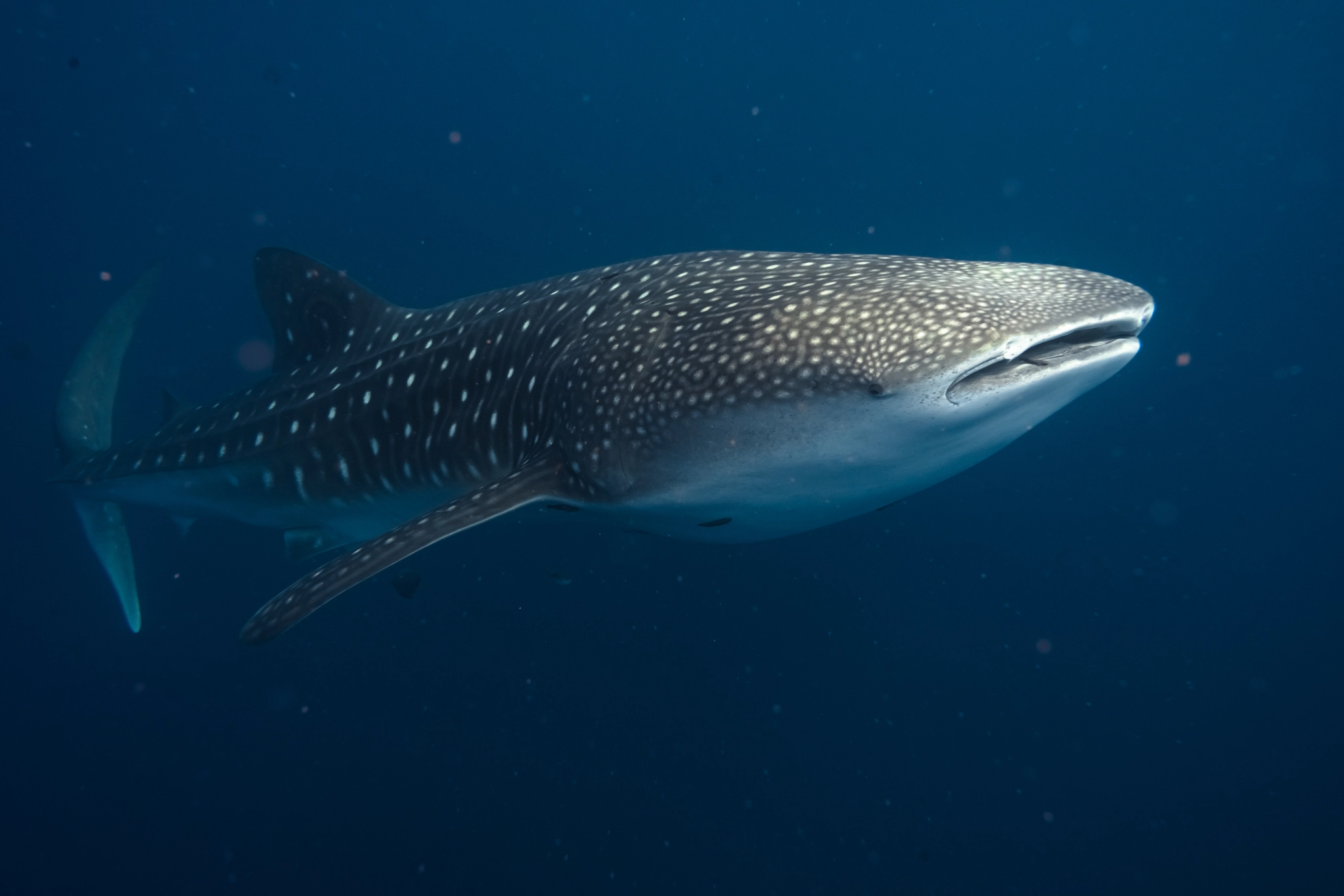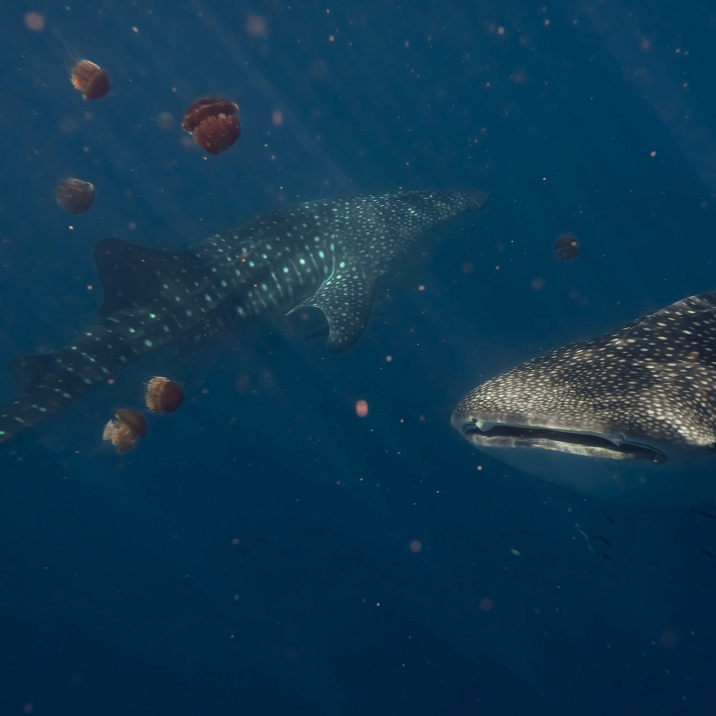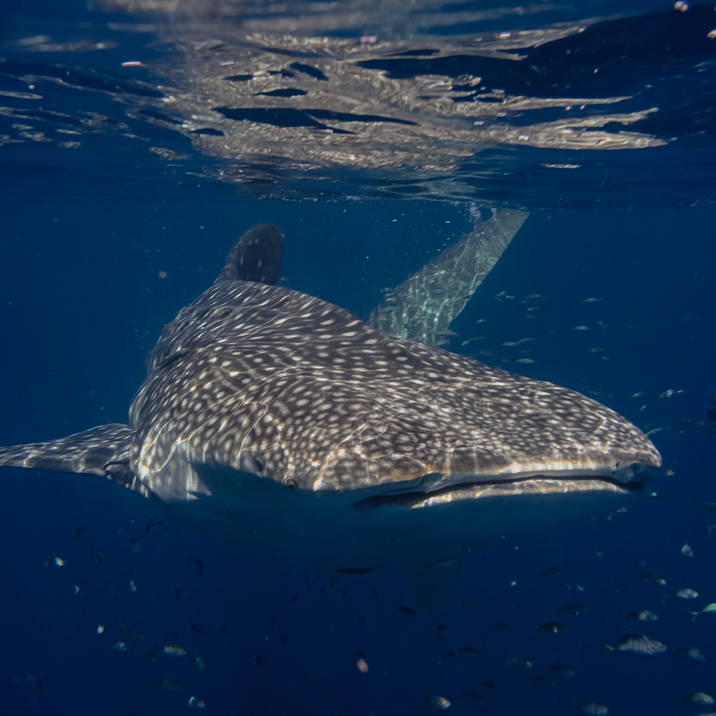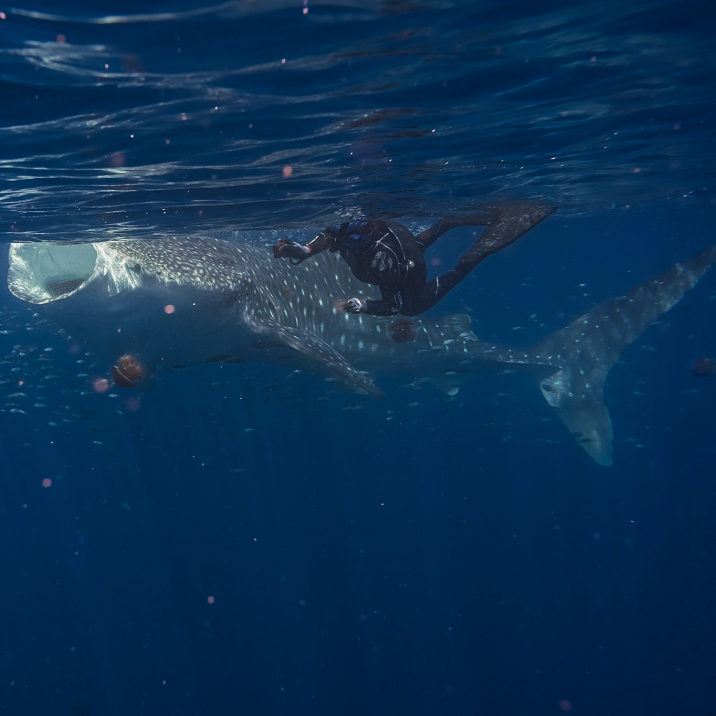Into The Ocean
Diving into the World of whale Sharks

It has been a very long time since my last blog post. I thought my PhD took all my free time, but it turns out
post-PhD paper writing while trying to run a postdoctoral research gig, consumes even more of my life. Nevertheless,
I have finally been able to write another blog post! and this time it is very ocean-centric, specifically, I'm delving
into the world of whale sharks. These majestic creatures have captivated me for years and have always been at the top
of my “things I want to see while diving” list. Unfortunately, I have not had the opportunity to swim with these
creatures, however, I do have a friend that has, and it is his story that I am going to tell.
Ben D'Antonio is currently completing his PhD at the University of Western Australia where he is monitoring whale shark
migratory behaviour. Ben and I met through volunteering at the Forktree project and got acquainted on a rainy day fixing
broken fences and shooing kangaroos out of the property. Ben expressed his dreams to conduct research on whale sharks
and had spent time in Indonesia working for conservation international, where he assisted in monitoring and tagging of
whale sharks. Now that he is in Western Australia, undertaking his dream research project, shows what you can achieve
when you put your mind to it.
His research will be fundamental to protecting whale sharks in Western Australia. These beautiful creatures generate
tourism and income for the region as they congregate at Ningaloo reef from March to August each year. Whale sharks have
been officially listed as endangered on the IUCN red list and therefore, we have a duty of care to protect these creatures.
By looking into migration patterns and more importantly, the drivers of these patterns, Ben's research will inform key
locations for whale sharks that can then be protected. Temperature, prey movement and thermal regulation are all possible
reasons as to why whale sharks may migrate and understanding these patterns can help to prevent decline in whale shark
populations as our climate changes (Braun et al. 2019). Furthermore, Ben will be looking into the fine scale movements
of whale sharks in conjunction with their prey to observe whether any patterns develop. The more we can understand about
whale sharks the best chance we have of protecting them.
The biggest threat to whale sharks is us. We, as humans, cause significant damage to whale sharks through our way of life.
These are docile, gentle creatures, which is a trait that we take advantage of. In a study that looked at whale shark
data from 2006-2018 spanning 338 individuals, 80% of these had some form of injury and 26% were observed to be injured
multiple times (Allen et al., 2021). Majority of these injuries were boating accidents, but entanglement in fishing lines
has also been observed to cause injury (Speed et al., 2008). The feeding behaviour of whale sharks brings them into
shallow waters to thermoregulate (warm up after deep ocean diving), which is normally in proximity to a reef edge or ocean
slope that leads to deeper waters containing prey (Copping et al., 2008). Coming into shallower waters makes them vulnerable
to boats and humans but despite this, boating accidents do not appear to affect whale shark behaviour as they are known to
return multiple times to the same site, even if injured (Araujo et al., 2019). Whale sharks have only been known to alter
their behaviour when returning to sites if there has been an extreme weather event such as a tropical storm or cyclone which
impacts their food availability (Valsecchi et al. 2021). Thus, if we don't physical kill whale sharks, our ongoing impact
on the climate will result in changed availability of resources for these creatures.
Whale sharks are the teddy bears of the sea that we don't deserve, unless we radically change our behaviour by preventing
fishing in whale shark migration sites, and imposing protection laws for these areas, then we are likely to lose these
creatures. Work such as Ben's will provide new information on whale shark movement, understanding how and why they
migrate, and patterns of behaviour in key sites such a Ningaloo, will mean government bodies can be informed of locations
to impose restrictions on boat movement. In addition, we can also better predict how whale sharks will respond to future
climate change if their migratory behaviour is found to be linked to ocean currents or prey. Our oceans are an
interconnected web of species, that all rely on, and impact, one another. Unfortunately, our place in this web is a destructive
one, but we can turn this around. We can begin to be a positive force in the oceans' cycle of life by raising awareness
of the damage we are causing and adhering to restricted areas, so let's start now.
**All photos were taken by Ben D'Antonio while on a field trip and he has given permission for these to be used as part of this blog.
References



